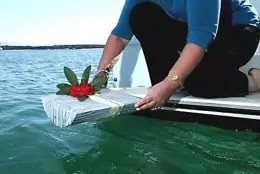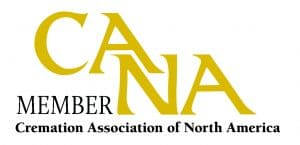The death care industry is undergoing some significant changes at present, and what most of us thought of, as the ‘traditional American funeral’ is maybe something of a dying ritual. Although I believe there will always be a place in American culture for the full-service traditional funeral, it certainly seems that more options are available for death care now, and people are making different choices.
How are death-care rituals changing in today’s culture?
To help you understand how death rituals are changing and what alternative options are now available, we have outlined here what the various alternatives to a standard burial are today. A key aspect of these emerging alternatives is both changing cultural and religious attitudes and costs. A traditional burial costs around $7,640 (NFDA 2019) and this excludes the cost of the burial plot. Many of the alternative funeral options we have discussed not only offer something that is not ‘standard’ but may be more unique, creative, and personalized. More importantly, many funeral alternatives can work out much more cost-effective than a traditional burial.
Cremation
Perhaps the most significant change to date is the cremation trend. Cremation is already revolutionizing the death care industry, and in 2020 the percentage of deaths dispositions resulting in cremation reached almost 57% nationally. This figure is forecast to reach around 80% by 2035, although some industry experts expect the cremation rate to grow faster. Of course, there are several states where the cremation rate is already at 65% or higher. Florida, California, Oregon, Colorado, Nevada, Montana, Hawaii, and Washington all have higher cremation rates.
Direct Cremation
Direct Cremation is perhaps the more revolutionary way that a new alternative is emerging. A direct cremation, sometimes called a ‘direct disposal’, simply means that the deceased is collected from the place of death and a cremation is conducted immediately with no service. In some states, a 48-hour waiting period has to be complied with. The cremated remains are then returned directly to the family. In many cases, this can be arranged without the family ever having to visit a funeral home. It can even be arranged all online these days. Significantly, a direct cremation service can be conducted for as little as $595 in some states, but can generally be arranged for around $1,000 in most states.
Once the direct cremation has been conducted the family is at liberty to conduct services if they wish, and/or scatter the ashes. Basically, this means that a direct cremation is the most inexpensive disposition alternative. However, this in no way makes it any less dignified as you can arrange your own personalized memorial service with the ashes present.

A direct cremation is a new alternative that many within the funeral industry are resistive of. It is dramatically reducing their profit margins. Nevertheless, the American public is embracing this new alternative for cheap death care. Why pay out thousands of dollars on a funeral when you can arrange a disposition for hundreds instead? And the reality is that many today are looking for the cheapest funeral option available.
Home funeral, natural burial or family-directed funeral
It was only really in the last century that death care moved into the domain of service professionals. Before that it was the norm for families to care for their own deceased, preparing the body, arranging for a simple wooden coffin, and taking the body along to the cemetery to be interred. A natural, organic ritual. Death, after all, is a natural process and just as we have culturally started to demand more natural childbirth options, so too are we demanding natural alternative options for death care.
The ‘home funeral’ or ‘natural burial’ is seeing something of a revival. This alternative simply means that the family chooses to not employ the services of a funeral director, but instead care for the deceased at home. Do note: there are a few states where a funeral director must be employed, even if it is just to issue permits or transport the body.
There are advocates for home death care around the United States and these groups will often assist the family in the basics of how to perform a home funeral. This alternative to a traditional funeral can also prove more personalized and less expensive. Obviously, you are saving the cost of paying a funeral director for their services, and a DIY coffin or shroud is often used, with burial in a green burial site.
So, how much does a green burial cost?
Green burial sites fees vary. The least expensive natural burial plots start at around $500, but green burial plots can cost up to around $2,000. The difference is that no concrete burial vault is required or metal casket, so overall natural burial cemetery costs will be less than a traditional cemetery.
This means a home burial can usually be conducted for less than $1,000 if a suitable low-cost natural burial plot is available. Or, of course, for those rural families with their own land, who may elect to burial a loved one on their property, it can be very inexpensive.
You can find out more about this alternative by reading our article on DIY funeral care, from the related articles section at the bottom of the page.
Resomation or aquamation
This is a more unusual funeral alternative and involves alkaline hydrolysis to dispose of the body. It is heralded by some as a new greener alternative to cremation, but it is not gaining popularity very fast. The process involves the body being submerged in a tank of water and lye and subjected to intense heat. The body is dissolved, the remaining green-brown liquid is flushed away and the bones can be crumbled to form remains similar to ashes. It is often referred to as Green Cremation or Water Cremation.
Read Aquamation or Resomation: A Green Alternative to find out more
The process is used by the Mayo Clinic to dispose of donated bodies, but there has been resistance to the process in the U.S. Currently, it is legal in Alabama, California, Colorado, Connecticut, Delaware, Florida, Georgia, Kansas, Idaho, Illinois, Maine, Maryland, Minnesota, Missouri, Nevada, North Dakota, Oregon, Utah, Vermont, Washington, Washington D.C, and Wyoming. This list does keep changing as states introduce legislation, or occasionally when legislation is overturned.
New Hampshire did pass legislation to approve the process but reversed it in 2013 after lobbying from religious groups. Legislation to approve Alkaline hydrolysis is being considered in New Jersey, New York, North Carolina, Ohio & Pennsylvania.
A Funeral Pyre
This is again a somewhat limited alternative, as the only legal outdoor funeral pyre is in Colorado. A couple in Arizona attempted to open up an outdoor funeral pyre on their rural land in Southern Arizona but faced resistance. The Crestone Project in Colorado offers natural outdoor cremation, where the deceased is wrapped in a linen shroud, placed on the cremation pyre, and surrounded by juniper logs. It serves all faiths and even facilitates the involvement of the family in the cremation pyre process if desired.
A Sea burial

Many people feel drawn by the ocean. Divers, who have spent hours in their lifetime underwater, and marine personnel, can all feel that a burial at sea is a more befitting alternative to a standard funeral. A sea burial can simply mean a cremation and then a scattering at sea. This is certainly the simplest and most cost-effective sea burial. However, it is possible to conduct a full-body burial at sea, there are just some specific Environmental Protection Agency regulations to comply with. (EPA Regulations 21-5.3)
The burial must take place at least 3 nautical miles from land and in water at least 600 feet deep. Every effort must be made to ensure the body will sink to the bottom of the ocean, so a weighted body bag or a casket with holes bored into it must be used.
How much does a sea burial cost?
Considering that a marine quality burial shroud that is suitable for full body burials at sea can cost around $1,750.00 and the charter of a vessel can cost around $8,000 – $10,000, this does not make sea burials a cost-effective alternative to a traditional funeral.
However, a sea burial by ash scattering can work out much cheaper. A direct cremation can be performed for between $495 and $1,395, with an unattended sea scattering costing between $200 – $400. So a sea burial can probably be achieved for around $1,000.
A Viking Funeral
In March 2021, a bill was passed in state legislation to designate sites to conduct open-air cremation. If the Maine bill becomes law, it would allow a nonprofit company to conduct open-air cremations. The ritual would have to take place on designated land of at least 20 acres.
The Maine nonprofit company named Good Ground, Great Beyond lobbied for permission to conduct open-air cremation on their 60-acre property. The mission of the company is to create an alternative community sanctuary with an outdoor funeral pyre and scattering gardens.
This would enable those that are seeking an alternative cremation disposition could choose to hold a Viking Funeral on an outdoor funeral pyre. A more natural and organic option for a simple cremation.
Human Composting or Natural Organic Reduction
Human Composting, which is technically and legally referred to as Natural Organic Reduction (NOR) was first legalized in Washington State in 2019. Now it is legal in Colorado and Oregon, with bills going through legislation in California and New York.
It involves the speeded-up organic reduction of a human corpse in a steel container with the addition of oxygen, heat, and microbes. The process takes about 30-days and is conducted in a controlled facility. At the end of the process, one metric yard of soil is produced which is extremely nutrient-rich and can be given to the family or donated to a conservation project.
The cost for a Natural Organic reduction presently ranges between $3,000 and $5,500.
Visit our Guide to Human Composting for full information.
A Life Celebration
A ‘life celebration’ is the noveau alternative to a standard funeral. It simply means that the ritual is organized more like an uplifting event, as opposed to the traditional somber funeral. The services of a celebrant may be employed, although many funeral homes are now adapting by hosting their own life celebrations. Typically a celebrant is not ordained or affiliated with any faith, although they often fulfill the role that clergy would conduct.
A life celebration is deemed a more personalized approach to commemoration. It may involve a special theme relevant to the deceased, or such niche services as dove or butterfly releases. It may often not be conducted in a funeral home but in some other venue. There are even ‘life celebration event planners’ similar to wedding planners. The celebrant will often charge a fixed fee for their services, and they will spend some time with the family to establish how best to commemorate the life of the deceased.
A life celebration can also be conducted as part of a direct cremation memorial service, or as part of a home burial. In this way a life celebration need not be an elaborate or expensive affair, it is more about paying tribute in the most befitting and personalized way.
Ultimately a funeral is a consumer purchase, and as consumers, we all demand choice these days. Choice and best value. We shop around and expect to get a deal. We like to think we can personalize or customize our purchases. I think these consumer trends are starting to impact the funeral trade, and now we are seeking new alternatives to the once ‘standard’ or traditional funeral.
Related Articles:
Resources:

